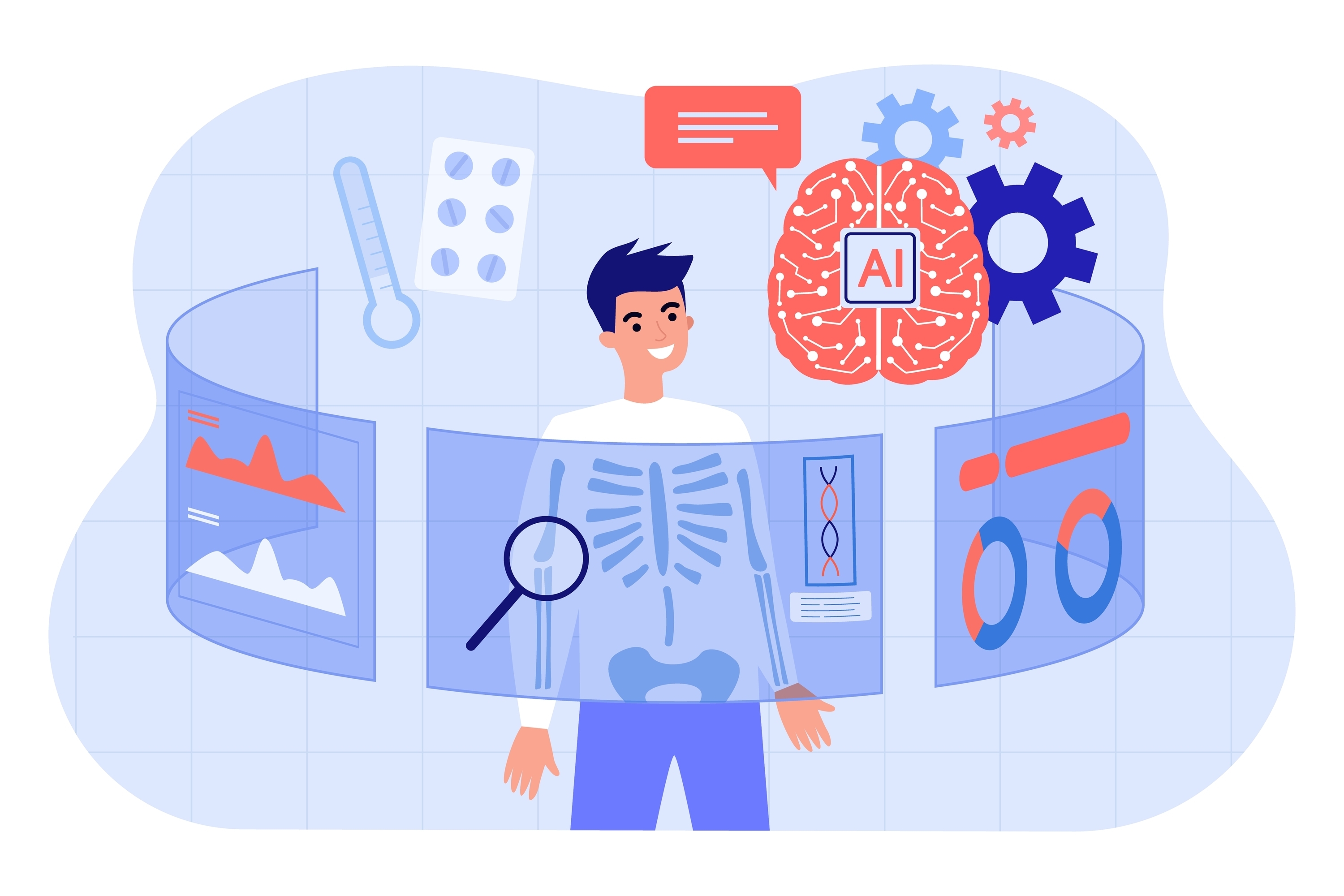ASOURCE®NAVI

公開日:2025.04.11
医療分野におけるAI(人工知能)の進化は、診断支援システムの分野で特に注目されています。AIは膨大なデータを瞬時に処理し、診断のサポートを行うことで、病気の早期発見や診断の精度向上に大きく寄与しています。第4回では、AIを活用した診断支援の現状、医療現場での具体例、医師との協働の重要性、そして今後の課題についてまとめます。
AIが医療分野で活躍する場面として最も顕著なのが、放射線画像診断です。画像診断AIは、CTやMRIなどの画像から異常所見を高精度に識別し、病気の有無や可能性を短時間で提示します。これにより、医師は患者一人ひとりに割ける診断時間が増え、見逃しのリスクも減少します。たとえば、肺がんや脳腫瘍の早期発見においてAIが微細な異常部位を検出し、医師にアラートを発する事例が報告されており、診断精度の向上が期待されています。
病理診断の分野においても、AIは革新的な役割を果たしつつあります。病理診断材料のデジタル化と機械学習技術の融合により、AIは顕微鏡画像から細胞や組織の異常を高精度に検出し、診断を支援しています。特に、がん病理診断において、AIは膨大な病理スライドを迅速に分析し、微細な細胞変化や腫瘍の特徴を識別できます。従来、熟練病理医の目に依存していた診断プロセスに、AIが客観的な分析を加えることで、診断の精度と一貫性が向上しています。さらに、AIは稀少な病理所見や微小な病変の検出にも貢献し、早期診断の可能性を広げています。このほか、不足している病理医の負担軽減にも役立っています。
AI診断の導入は、眼科領域でも成果を上げています。たとえば、糖尿病性網膜症の診断では、AIが網膜画像を解析し、従来の人間の診断と同等の精度を達成しています。また、内視鏡検査においても、AIの活用が急速に進んでいます。消化器内視鏡検査では、AIが粘膜画像から微小な病変や早期がんを高精度に検出することが可能となっており、特に大腸がんや胃がんの早期発見に大きく貢献しています。AIは、従来は見逃されがちだった10mm未満の小さな病変も高い精度で指摘できるため、患者の予後改善に期待が寄せられています。これにより、初期段階での発見が可能となり、患者の予後が改善されるケースが増えています。さらに、新型コロナウイルス感染症の流行時には、胸部画像から感染の兆候を検出するAIが活用され、診断速度が向上し、医療現場の負担軽減に貢献しました。
AIは診断の効率化に加え、精度向上にも寄与しています。従来、医師の経験や知識に頼っていた部分が、AIのデータ解析力により補完されることで、診断のばらつきが減少しています。また、AIは過去の診断データと比較して新たなパターンを検出できるため、希少疾患の発見や、見逃されがちな病変の指摘にも役立っています。これにより、医療の質が向上し、患者への負担軽減につながっています。
2022年度の診療報酬改定により、「人工知能技術(AI)を用いた画像診断補助に対する加算(単純・コンピュータ断層撮影)」が保険適用されました。
AIは医師の代替ではなく、補助役としての役割を担っています。AIが提示する診断結果を医師が確認し、最終的な意思決定を行うプロセスが重要です。この協働によって、より確実で迅速な診断が可能となり、医師は患者との対話や治療方針の説明により多くの時間を割けるようになります。また、AIを活用した診断は医師の教育にも役立ち、若手医師のスキル向上をサポートするツールとしても期待されています。
一方で、AI診断には課題も残されています。データの偏りによる誤診リスク、AIの解析結果を医師が適切に解釈するスキル、そして法的責任の所在などが議論の対象です。また、医療機関ごとにAIシステムの導入状況が異なるため、標準化と均一な品質管理が求められています。しかし、これらの課題を克服することで、医療現場におけるAIのさらなる発展が期待されます。
診断支援AIは、医師の意思決定を支え、医療の質を向上させる大きな可能性を秘めています。医師とAIが協働することで、より早期かつ正確な診断が実現し、患者の健康維持に貢献できます。これからの医療の未来において、AIは欠かせないパートナーとなることでしょう。
メディアスグループは、医療機器の販売を中心とした事業を展開しています。医療に携わる私たち(Medical+us)は、医療現場や人々の健康的な明日へ役立つ情報をお届けする情報発信源(Media)の役割も果たしていきたいと考えています。